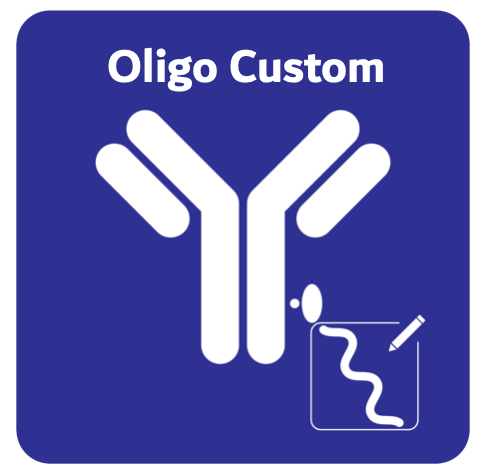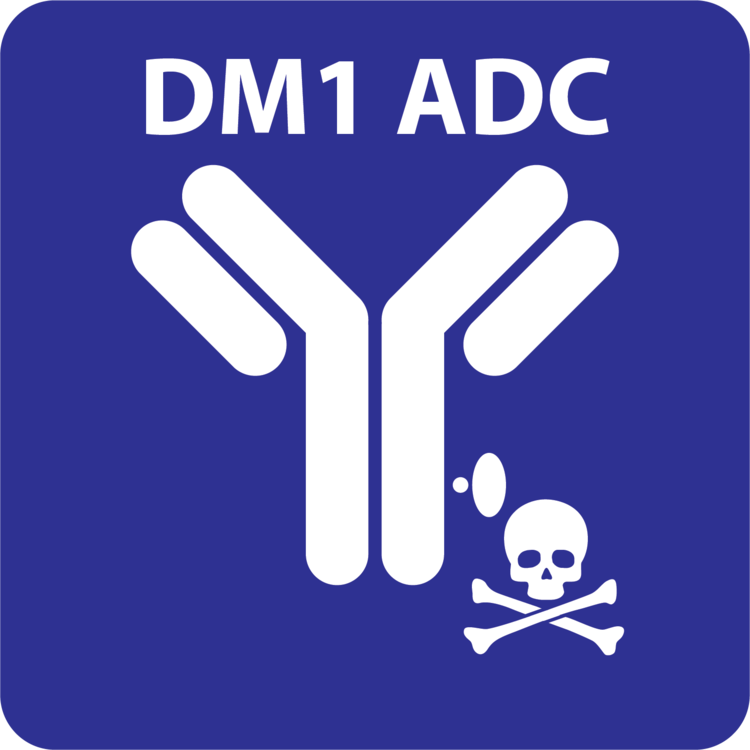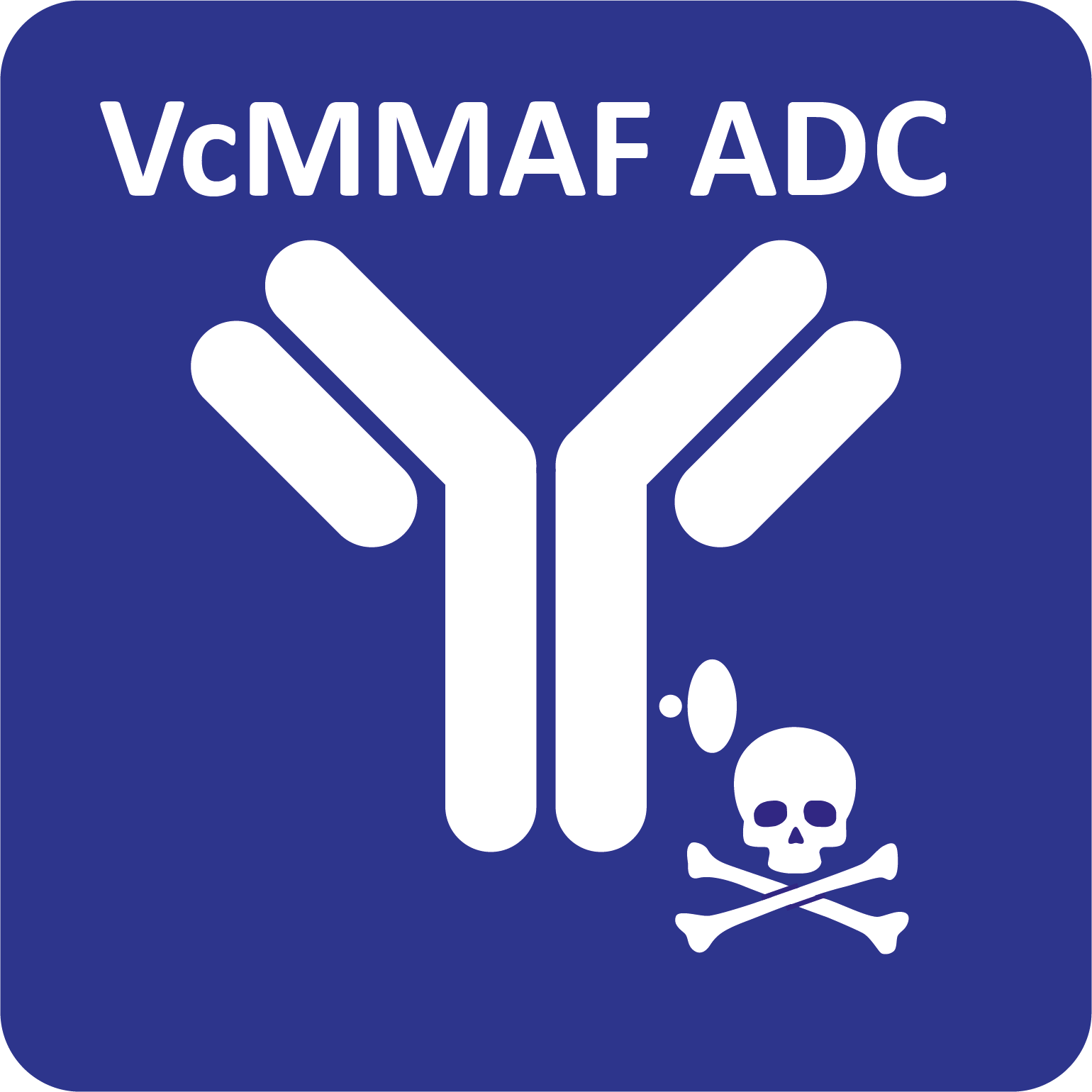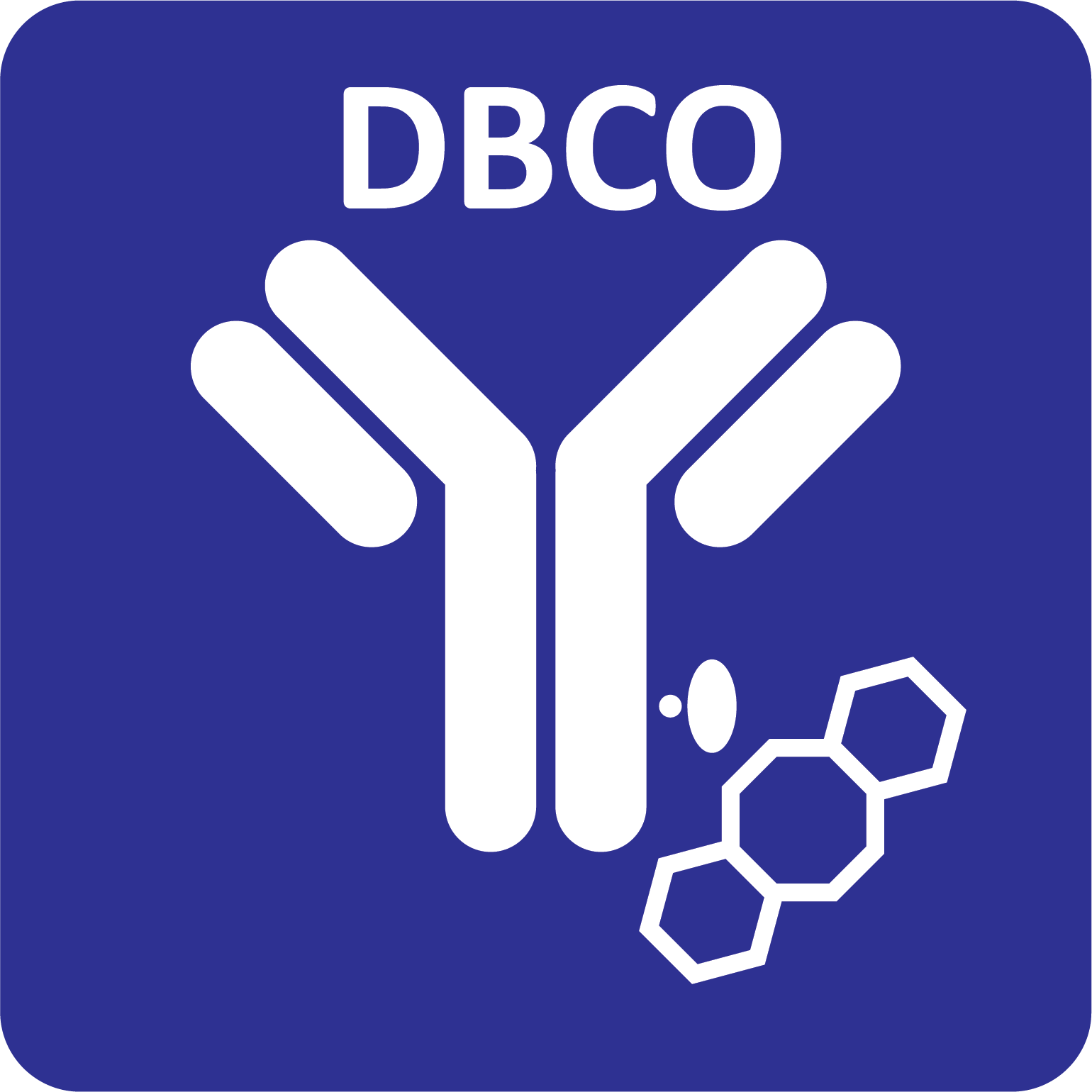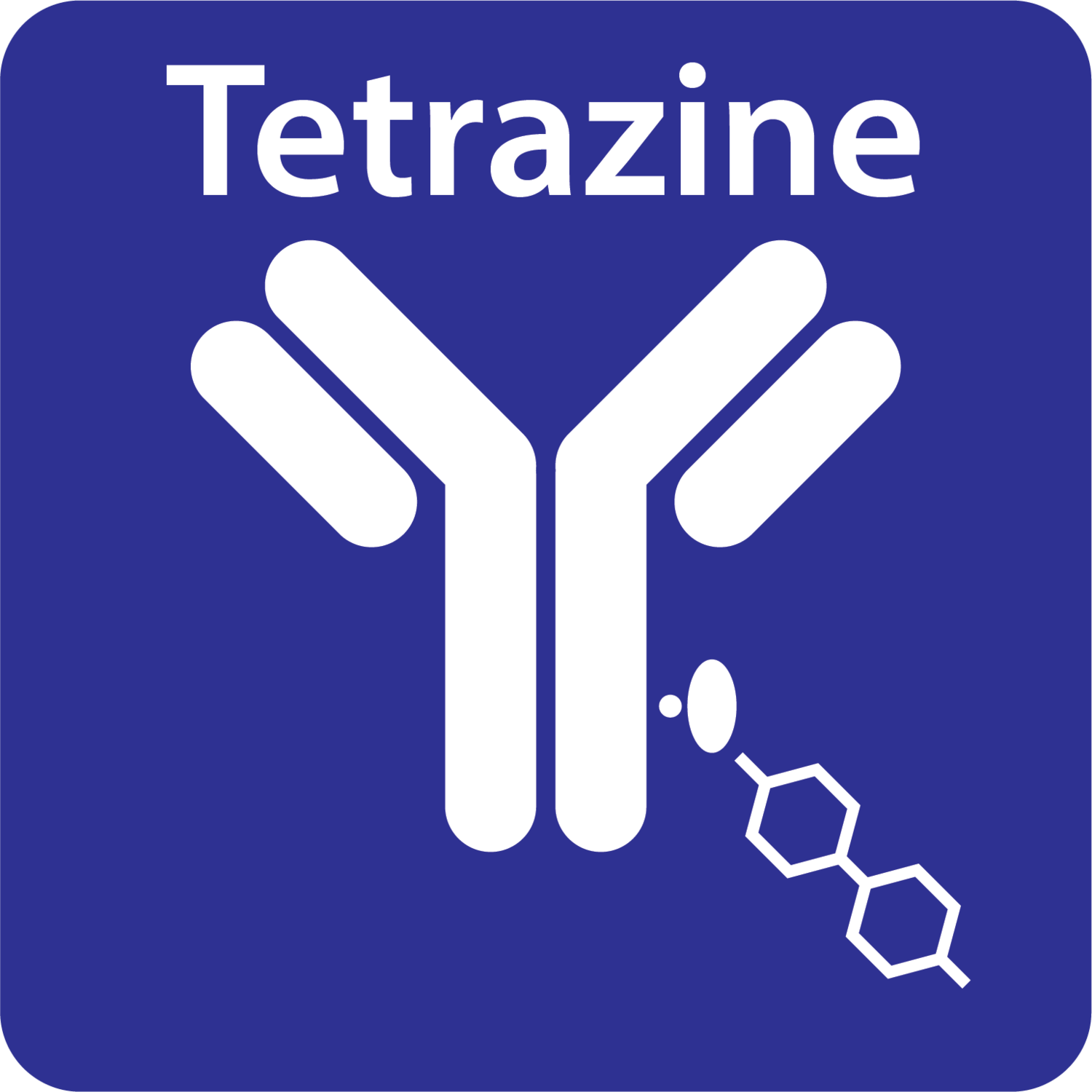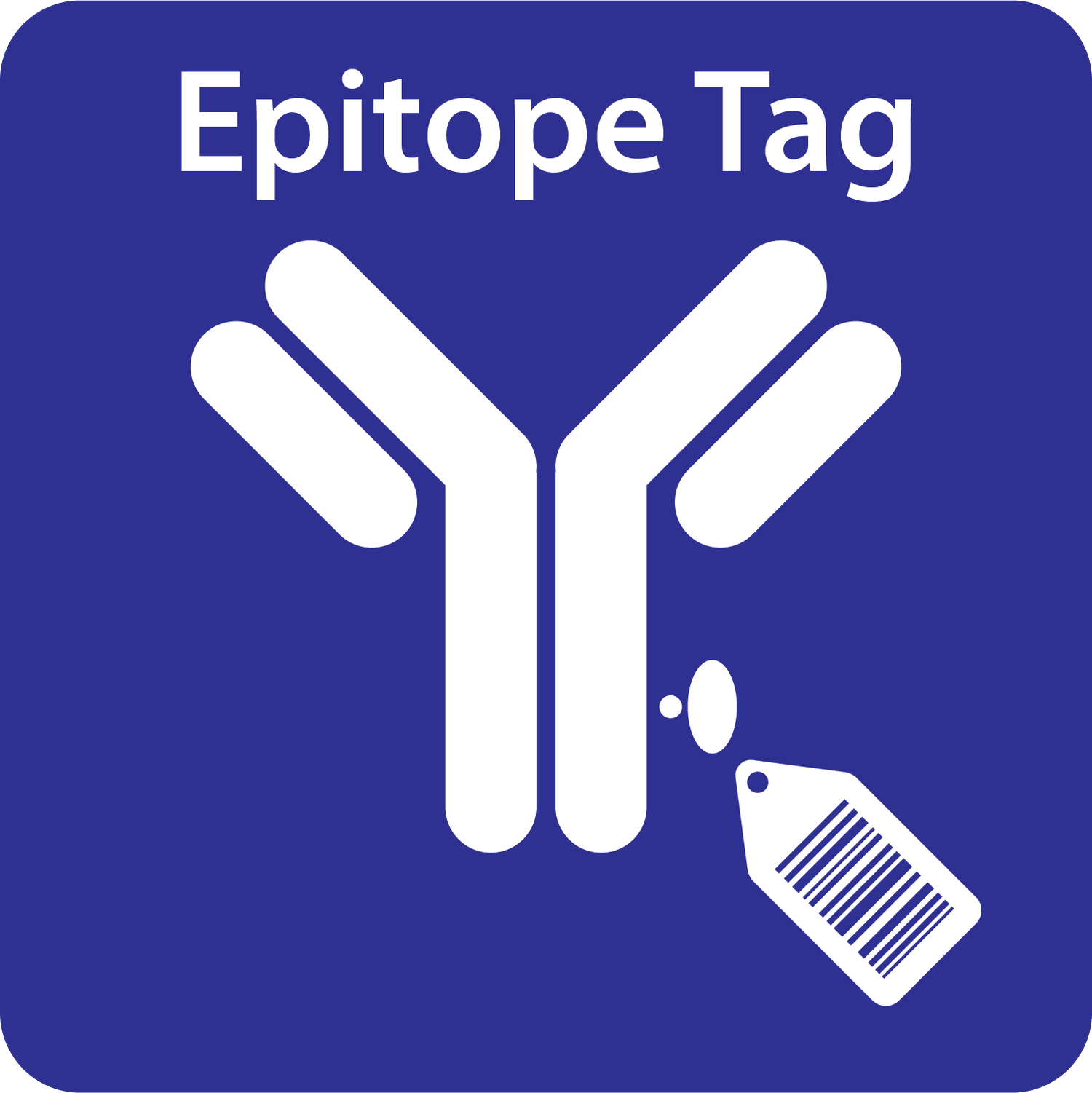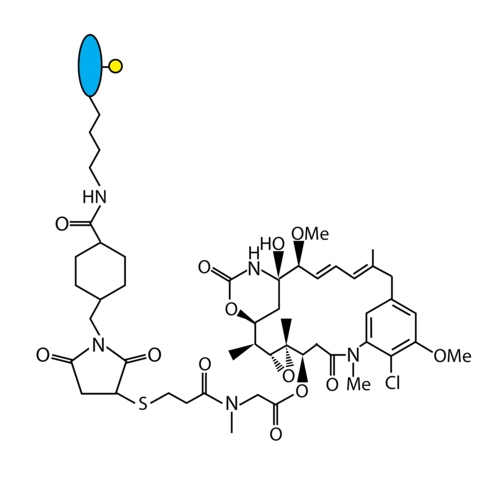Your cart is currently empty!
oYo-Link® DM1 Antibody-Drug Conjugation
In vitro, research use only. Not recommended for in vivo experiments.
oYo-Link® DM1 is an antibody-drug conjugation reagent enabling site-specific labeling of compatible antibodies with up to two DM1 drugs per antibody for subsequent cell killing assays or other drug delivery applications. Simply mix the oYo-Link DM1 with your desired antibody followed by photocrosslinking for conjugation in 30-sec hands on time, 2 hours total.
Requirements: Photo-Crosslinking Device
Quote or Bulk Orders? Click here
oYo-Link® DM1 is an Antibody-Drug Conjugation reagent allowing for rapid, site-specific labeling of DM1 drug labels to the heavy-chains of compatible antibodies with up to two labels per antibody. oYo-Link® limits the attachment of the DM1 drugs to the heavy chains of the antibody and therefore ensures that the drug label does not interfere with antibody binding. Furthermore, site-specific labeling limits attachment of 1-2 DM1 drugs per antibody, providing precise antibody-drug conjugate ratios.
Any free oYo-Link drug will not penetrate into cells, so there is no background cell killing, and there is no need for purification post conjugation so researchers can proceed directly to the cell killing assay.
As a synthetic derivative of the microtubule-targeted agent mertansine, also known as the maytansinoid DM1, the DM1 ADC is an antibody-conjugatable, anti-mitotic agent that overcomes systemic toxicity associated with mertansine and enhances tumor-specific delivery.
Generate antibody-DM1 conjugates in only 30-seconds hands-on time, 2 hours total.
The antibody labeling procedure simply requires mixing oYo-Link® DM1 with the desired antibody followed by photocrosslinking with non-damaging black light (365 nm).
Photocrosslinking can be carried in most buffers, including those containing amine-containing molecules (e.g. TRIS, glycine) or storage proteins (see Buffer Compatibility Table).
Application: Antibody conjugation reagent for Targeted cell death; Targeted cell death for cancer cells; High-throughput screening with cell killing assays.
Requirements: To label your compatible antibodies with oYo-Link®, you will need a Light Source emitting at 365nm (6-10W). Purchase AlphaThera’s LED Photo-Crosslinking Device here or use a Compatible Device.
Purchasing Information: For Credit Card purchases, proceed with checkout on website. To request a quote or enquire about bulk orders click here.
Technical Support: For science questions or questions concerning compatibility contact us here.
Webinar: Simple, fast, site-specific antibody labeling with oYo Link®
Watch our short introduction to AlphaThera’s oYo-Link® site-specific antibody conjugation technology and learn how to streamline your assays with these superior labeling products.
Antibody Conjugation User Manual
Read our antibody conjugation usual manual for instructions on how to easily conjugate your antibody with oYo-Link products.
Demo: oYo-Link® Antibody Conjugation
Find out how to site-specifically label your antibody with just two steps: mix and illuminate. 30 seconds hands-on time, 2 hours total.
oYo-Link® Product Brochure
Download our product brochure

oYo-Link® DM1 Cell Killing Assay for SKBR3 Cells
The figure above shows results of a cytotoxic cell assay illustrating the highly specific cell-killing nature of oYo-Link’s antibody-drug conjugate. Her2-positive SKBR3 cells were incubated with oYo-Link® DM1 labeled anti-Her2 (Trastuzumab), SMCC DM1 labeled anti-Her2, oYo-Link® DM1 in isolation and anti-Her2 (Trastuzumab) in isolation.
Since Trastuzumab targets the Her2/neu receptor, efficient cytolysis is observed when the oYo-Link® DM1 ADC is mixed with the Her2-positive SKBR3 cells (black squares). When compared to the control ADC, Trastuzumab-SMCC-DM1, oYo-Link performs just as well if not slightly better. However, the real advantages come from oYo-Link’s versatility and compatibility with nearly any buffer or concentration. The unconjugated antibodies and unconjugated oYo-Link® DM1 do not result in cell death, as shown above. The compounds were added 24 hours after cell seeding and the data was evaluated at 72 hours after cell seeding. Assay was performed and analyzed by the xcelligence™ RTCA SP instrument.
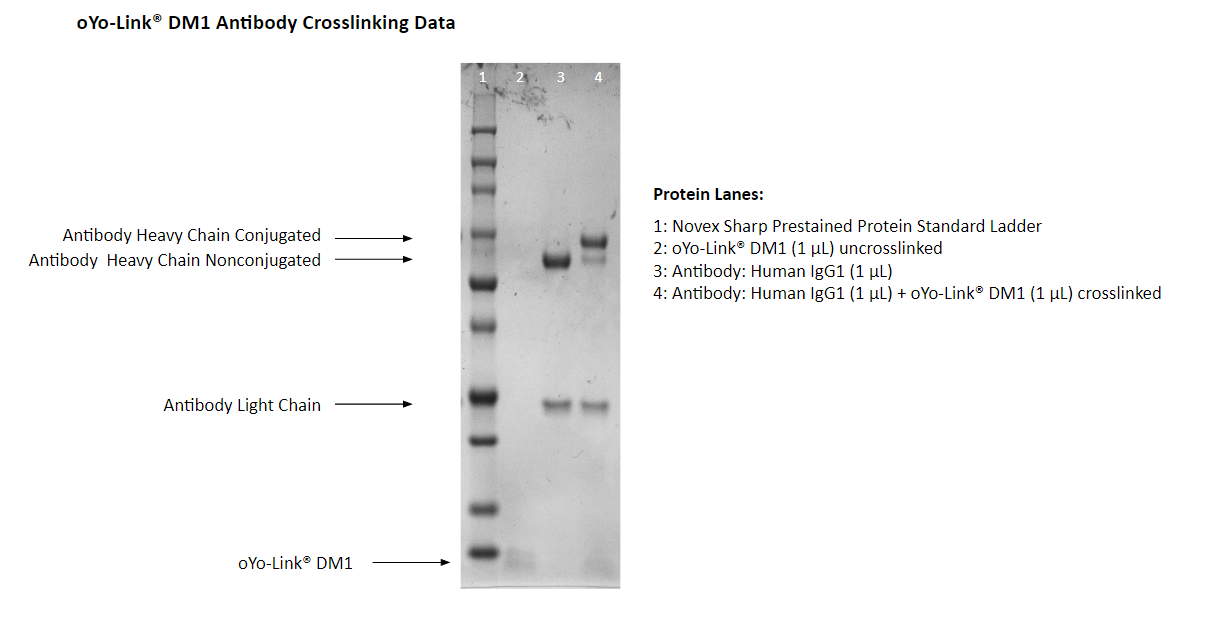
oYo-Link® DM1 Antibody Crosslinking Data
oYo-Link DM1 Photo-crosslinking Efficiency shown by SDS-PAGE: using a 4-12% Tris Gel shows an upwards shift of the antibody heavy chain following site-specific photo-crosslinking with oYo-Link. *Note the size and migration for each unreacted oYo-Link product will differ.
Specifications:
| Product Name | oYo-Link® DM1 |
| Catalog # | AT7002 |
| Lot # | See the product spec sheet shipped with product. |
| MSDS | |
| Antibody and Buffer Compatibility | View the oYo-Link Antibody & Buffer Compatibility Table here. Note: To label mouse IgG1 antibody, you must order the oYo-Link mIgG1 products, which will only label mIgG1 antibody. |
| Molecular Weight | 8000 g/mol |
| Concentration | 270 µg/mL |
| Molar Concentration | 33 µM |
| Storage Buffer | 1 x PBS |
| Shipping Condition | This product is shipped as a dried clear or white pellet at ambient temperature. |
| Reconstitution | Before opening, briefly centrifuge each tube to ensure that the entire pellet is at the bottom. For all product tubes: Add 100 µL sterile ddH2O and vortex tube briefly until fully dissolved. |
| Storage and Stability | The dried product can be stored at 4°C or -20°C upon receipt. Following reconstitution, the product can be stored at 4°C for short-term durations (< 1 week) and -20°C to -80°C for longer time-spans. |
| Conjugation Instructions | After reconstitution, each product tube is capable of labeling up to 100 µg of antibody. Please find and follow the Antibody Conjugation User Manual here |
| Other Notes | Disposal of product should be performed in compliance with all applicable federal, state, and local regulations. This product does not meet hazard classification criteria based on evaluations made by our company under the OSHA Hazard Communication Standard, 29 CFR 1910.1200. |
Exploring the Sensitivity of Antibody–Drug Conjugate Efficacy to the Selection of Payload, Antibody, and Cell line
Mara Rao, Shruthi Murali, Danielle Amores, Feifan Yu, Andrew Tsourkas. (2024). Exploring the Sensitivity of Antibody–Drug Conjugate Efficacy to the Selection of Payload, Antibody, and Cell line. Bioconjugate Chem. [online] doi: https://doi.org/10.1021/acs.bioconjchem.3c00537
How many cells are suitable to seed on a 96-well plate?
Typically, 2500-5000 cells per well is suitable for most cell lines, although this may need to be adjusted for some cell lines.
Do I need to remove free oYo-Link® drugs after antibody conjugations?
No, it is not necessary to remove unconjugated oYo-Link® drugs prior to adding the oYo-Link®-Antibody sample to cells. Unconjugated oYo-Link® drugs exhibit little to no background cell killing.
What is the concentration range of antibody-oYo-Link® drug for cell killing assays?
Most antibody drug conjugates will exhibit an EC50 between 10 pM and 10 nM, 72 to 96 hours after adding the ADC. If weak cell killing is observed at an ADC concentration of 10 nM, then extend the incubation time or increase the ADC concentration up to 200 nM. If this doesn’t result in significant cell killing, it usually indicates that the ADC is not able to effectively kill the selected cell line. You may consider testing alternative cell lines that may be more sensitive to the ADC or a different antibody.
When should antibody-oYo-Link® drugs be added to cells and how long before cytolysis is observed?
Antibody-oYo-Link® drugs can be added 24 hours after seeding cells. Cell cytolysis is typically apparent between 72 and 96 hours after adding the ADCs to cells.
What are the suggested negative control groups in a cell killing assay?
The recommended control groups are antibody alone, oYo-Link® drug alone, and isotype control antibody-oYo-Link® drug conjugate.
Will oYo-Link work with my antibody?
Please check the antibody compatibility table. Note: oYo-Link mIgG1 can be used to label mouse IgG1 antibody. Currently, oYo-Link mIgG1 is only available for certain products. Please check the product webpage. oYo-Link mIgG1 only labels mouse IgG1 and is not compatible with other antibodies.
Can oYo-Link be used to label antibodies in the presence of albumin and/or Tris?
Yes, since oYo-Link specifically bind to the heavy chain of IgG, it works in the presence of both albumin and Tris. oYo-Link is compatible with all common buffers. See the full buffer compatibility table here.
If an oYo-Link product has accidentally been left at room temperature for a week, will it still work?
With the exception of oYo-Link DBCO, all oYo-Link products are shipped as white or clear pellets and are very stable. While we recommend cold storage, they will not exhibit any loss of activity if left at room temperature for a week. oYo-Link DBCO must be shipped and stored cold (-20°C) immediately upon arrival, otherwise there will be a loss in activity.
Does AlphaThera offer conjugation service?
Yes. If you are interested in our conjugation service, please contact us at support@alphathera.com. For custom conjugation services, you will need to send us your antibody. The conjugation and purification fee depends on the size and specifications of each order. Purification is not required for most applications.
How many oYo-Link labels will be conjugated to each antibody?
For most subclasses and species of antibody, oYo-Link will result in the conjugation of 2 labels per antibody (maximum), one label per heavy chain. For example, ~95% of human IgG and Rabbit IgG will have two labels per antibody. However, there are a few antibodies such as mouse IgG2b and goat IgG, where the conjugation is slightly less efficient. In this case, 60 to 80% of the antibody will be labeled and have a mixture of 0, 1 and 2 labels per antibody. See the antibody conjugation efficiency here.
How do I know if oYo-Link was successfully conjugated to my antibody?
Antibody conjugation can be checked on SDS-PAGE gel. An example is present in the supporting data on each product page.
Does 365nm UV illumination damage the antibody and its binding affinity?
The conjugated and unconjugated antibody binding affinities have been tested via both ELISA and cell binding assays and don’t show any difference.
Do I need to remove free oYo-Link after conjugating to antibody?
For most immunoassay applications, purification is not necessary. In our standard recommended protocol, the molar ratio of oYo-Link-to-antibody is 5:1. These conditions ensure that the antibody conjugation efficiency reaches its maximum; however there will be a slight excess remaining in your antibody mixture. This is usually removed during immunoassay washing steps. However, if your application requires high antibody-conjugate purity, please contact us for more information on this process and for a detailed protocol.
For oYo-Link click-chemistry products, should I perform the click reaction before conjugation?
When working with oYo-Link Azide (Catalog #: AT3002) and oYo-Link DBCO (Catalog #: AT3003), it is required to perform the click chemistry coupling reactions with the molecule of interest first, prior to photo-crosslinking to an antibody. This is to avoid UV illumination damage to the click moiety and to avoid diluting oYo-Link prior to the reaction to maximize the reaction efficiency. For oYo-Link Tetrazine (Catalog #: AT3004) and oYo-Link Thiol (Catalog #: AT3001); it is recommended to perform the coupling reaction before photo-crosslinking. This is to avoid diluting oYo-Link prior to the coupling reaction to maximize the reaction efficiency.
What is the lowest amount of antibody that can be labeled by oYo-Link reagents?
We recommend working with at least 1 µg of antibody; however, it is possible that even lower amounts of antibody can be labeled.
Can antibodies that are highly dilute be labeled by oYo-Link reagents?
Yes, antibodies can be efficiently labeled even if diluted to concentrations as low as 50 µg/mL.
oYo-Link® Antibody-Drug Conjugation Advantages
- Consistency in the site-specific labeling process ensures that the efficacy and toxicity profiles of the ADC’s will be predictable.
- Site-specific labeling attaches the drugs to the Fc-region every time, guaranteeing no interference with antibody-binding.
- Free oYo-Link drug will not penetrate into cells, so no background cell killing. No need for purification post conjugation, proceed directly to the cell killing assay.
- Label 100+ antibodies simultaneously for increased high throughput capacity.
- Rapid labeling reaction. Extremely quick antibody to drug conjugation, requiring less than 30 seconds hands-on time, with ADCs ready in 2 hours total.
- Compatible with all common buffers, including BSA, Tris & Azide.
- Label as little as 1µg of antibody at a time & work with concentrations as low as 50µg/ml – conduct more experiments with one batch of antibodies and drugs.
- After resuspension, aliquot and save for future reactions.
Please Select Epitope Tag Options
4 EPITOPE TAGS: Please select only 4 Tags Below:
Each tag will be able to label the amount of Ab you selected on the previous page.

